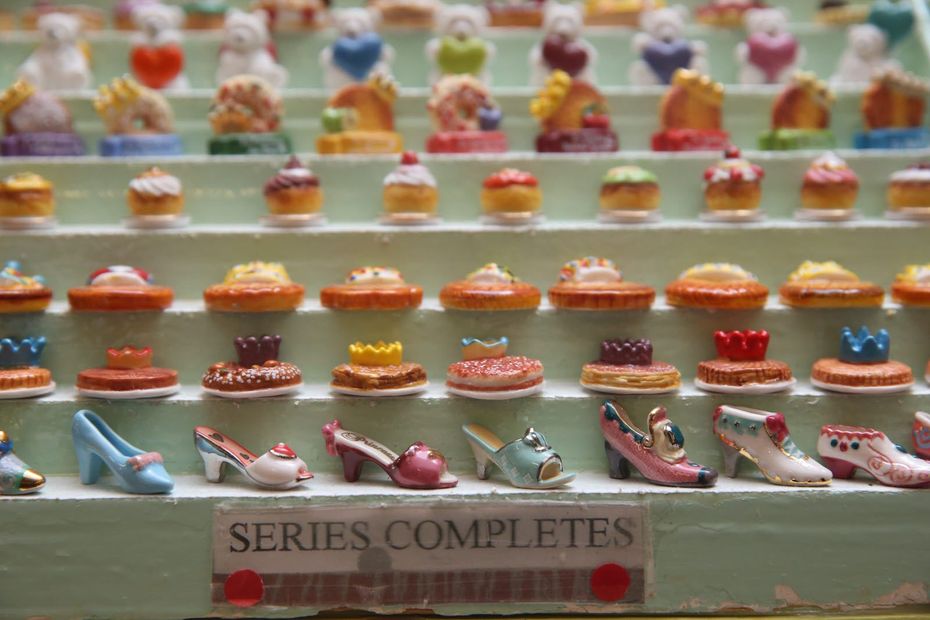When the time comes to draw the kings, some are more envious than others of having the winning share… and it’s not for the crown but for the bean. An association of fabophiles, bean collectors, exists in Civray, in Vienne.
Whether they represent film heroes, monuments, everyday objects or illustrious characters, every year around January 6, the beans in the cookies are a delight for children… but also for adults!
In Civray, in Vienne, an association brings together three collectors of these small porcelain subjects, and it is a family affair. Corine Richard is the president, her daughter Mylène is treasurer, and her cousin Isabelle Lacheteaux, the secretary.
At 6,000, I stopped counting!
Corine Richard, fabophile
–
All three are passionate, and the two cousins fell in love more than fifteen years ago with a series of beans bearing the image of Nemo, the little fish from Pixar studios. Their collection was born, and there was no longer any question of stopping.
–
“At 6,000, I stopped counting”, Corine tells us. “They are displayed on a rotating display and shelves made by my cabinetmaker husband, or glued on CDs for the complete series.” She likes to search to complete her series of beans, rather than buying them in batches. His quest certainly goes through gluttony – Corine’s husband loves frangipane, she prefers brioches -, but also through exchanges, flea markets, or even bean exchanges: meetings of collectors who come to buy and exchange their little porcelain subjects.
The three women took over the Fabophiles de Civray association in 2018, to relaunch the bean scholarships in the town. In 2019, they brought together 33 exhibitors and several hundred people. The 2022 edition will take place on February 20 at the La Récré municipal hall in Civray, and it should bring together around thirty participants, from Poitou-Charentes, but also from Dordogne, Tours, and even Cherbourg. For Isabelle Lacheteaux, it is also an opportunity to meet other enthusiasts: “We make friends, the stock market attracts fabophiles, like Sunday walkers”.
–
In France, many associations bring together these amateurs. The largest of them, the association of Fabophiles de France, brings together more than 700 members, French but also Swiss, Belgian and even Japanese, and each year it publishes a directory of new beans produced and concealed in galettes and brioches. .
Trying to collect everything that comes out is almost impossible!
René Cousinat, president of the association of Fabophiles de France
–
René and Michèle Cousinat, two retirees from Marne, have been at the head of the association since 1995. They started this collection more than thirty years ago: “We were taken by some beans from the bicentenary of the Revolution that we liked, and we wanted to complete the series”. René also has some tips for getting started in this kind of collection: “You have to specialize in categories, limit yourself to themes, such as comics, or certain comics, cakes, animals… Each year, there are 5 to 6,000 new bean models. Try to Collecting everything that comes out is almost impossible!”
And this advice can turn out to be rather useful, because fabophilia can quickly take up a lot of time: between December and February, it’s the high season for these enthusiasts, and in January, Michèle Cousinat goes every two or three days to Paris to look for new beans… On the wallet side, this quest can also be very expensive: in addition to the price of the pancakes, the purchase of beans in the bakery can be around 6 or 7 euros per unit.
–
That said, some collections are also very expensive: in 2008, the Museum of Beans and Crèches, located in Blain in Loire-Atlantique, received the donation of an entire collection for a value of 150,000 euros. A gift from Nicole-France Riffet, a Parisian fabophile who died four years later, who had accumulated 2,033 fèves dated from 1890 to 1960.
Because broad beans have a long history dating back to the Middle Ages. At the time, every January 6, the king of a corporation was chosen thanks to a gold coin hidden in a loaf of bread… and around the 12th or 13th century, a bean (the legume) replaced the cent, for financial reasons.
–
The tradition continued and spread, the cake succeeded the bread, and the idea of hiding a child under the table to allocate the shares was born during the 15th century.
The first porcelain fèves from Saxony, representing characters, appeared in 1875, and from the beginning of the 20th century, the motifs diversified, evoking luck (with four-leaf clovers or horseshoes for example), inventions (like the airship), or even animals. About fifteen years later, the practice developed in France when Martial Ducongé established a bean factory in Limoges, which was quickly taken over by his wife after the First World War.
–
Now, many of these fèves are produced in Asia, but some French companies persist in France, such as Panessiel in Grenoble, or Fèves Colas in Clamecy, and some ceramists are taking up the torch of small series of collector fèves. Proof that fabophilia still has a bright future ahead of it, as Stéphanie Briand-Viaud, who has worked at the Blain Museum for thirty years, says. “We have all one day or another kept a few beans in a small jar at the bottom of a drawer”, and that’s probably how great collections are born.
–






